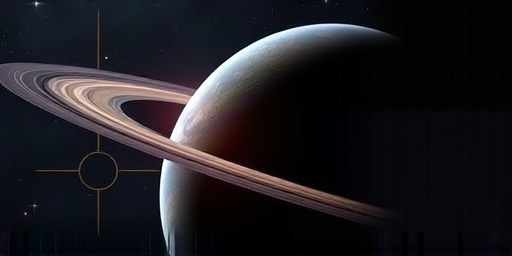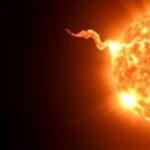In a groundbreaking observation that has sent ripples through the scientific community, NASA’s James Webb Space Telescope (JWST) has detected dimethyl sulfide (DMS) in the atmosphere of the exoplanet K2-18b. This compound, known on Earth as a byproduct of marine life, marks the strongest hint yet of biological activity beyond our solar system. The discovery, announced on September 11, 2023, by an international team of astronomers, suggests that K2-18b—a world 120 light-years away in the constellation Leo—might host microbial life in its vast ocean. However, researchers emphasize that while the data is compelling, confirmation requires additional scrutiny to rule out non-biological sources.
The JWST‘s advanced infrared spectroscopy pierced through the planet’s atmosphere during observations in 2023, identifying spectral signatures of DMS alongside methane and carbon dioxide. This exoplanet, orbiting a red dwarf star, is classified as a super-Earth or mini-Neptune, with a diameter 2.6 times that of Earth and a mass 8.6 times greater. Its position in the habitable zone—where liquid water could exist—has made it a prime target for astrobiologists since its discovery by NASA’s Kepler mission in 2015.
Dimethyl Sulfide Emerges as Key Indicator in K2-18b Analysis
The detection of DMS is pivotal because, on Earth, it is almost exclusively produced by phytoplankton in oceans, which convert sulfur compounds into this volatile gas. In the latest spectral analysis from JWST, the team led by Nikku Madhusudhan from the University of Cambridge found DMS concentrations that align with levels seen in Earth’s marine environments. “This is the first time we’ve detected a molecule like DMS on an exoplanet,” Madhusudhan stated in a press release. “It’s a tantalizing clue, but we must be cautious—extraordinary claims require extraordinary evidence.”
K2-18b’s atmosphere, previously known to contain hydrogen and water vapor from Hubble Space Telescope data in 2019, now reveals a more complex picture. The JWST observations, conducted using the telescope’s Mid-Infrared Instrument (MIRI), spanned multiple transits of the planet across its star. These transits allowed scientists to isolate the planet’s light and analyze absorption lines indicative of specific gases. The DMS signal appeared at a statistical significance of three sigma—meaning there’s a 0.3% chance it’s a false positive—prompting calls for deeper investigation.
Further details from the study, published in the Astrophysical Journal Letters, highlight that K2-18b likely features a global ocean beneath a hydrogen-rich envelope. Models suggest surface temperatures around 0 to 40 degrees Celsius, conducive to liquid water. Statistics from the exoplanet catalog show that of the over 5,500 confirmed exoplanets, fewer than 100 reside in habitable zones, making K2-18b a standout candidate. The presence of DMS, at parts per million levels, elevates its profile, as this gas dissipates quickly in atmospheres without replenishment, implying ongoing production.
JWST’s Technological Edge Reveals Hidden Atmospheric Secrets
The James Webb Space Telescope, launched in December 2021, represents a quantum leap in exoplanet observation capabilities. Orbiting the Sun at the L2 Lagrange point, JWST’s 6.5-meter gold-coated mirror captures infrared light that ground-based telescopes cannot, enabling detailed atmospheric profiling. For K2-18b, the instrument’s NIRSpec and MIRI spectrometers dissected the light spectrum with unprecedented resolution, identifying molecular fingerprints invisible to previous missions.
Compared to the Hubble Space Telescope, which first hinted at water vapor on K2-18b, JWST offers 100 times the sensitivity in the infrared range. This allowed the detection of trace gases like DMS, which previous instruments might have overlooked. “JWST is transforming our understanding of exoplanets,” said NASA Administrator Bill Nelson. “From barren rocks to potential ocean worlds, it’s opening doors to the cosmos we never imagined.”
Data processing involved advanced algorithms to subtract stellar interference and atmospheric noise. The observations totaled over 20 hours across three sessions, yielding spectra that matched laboratory simulations of DMS. Exoplanet experts note that JWST has already characterized over 20 atmospheres since its science operations began, with K2-18b’s biosignature standing out. The telescope’s lifespan, projected at 20 years, promises more such revelations, potentially cataloging dozens of habitable worlds in the coming decade.
Scientific Debate Intensifies Over Biosignature Validity
While the DMS finding excites astrobiologists, skepticism abounds within the scientific community. Sara Seager, a planetary scientist at MIT, cautioned, “DMS on Earth is biological, but on an alien world, abiotic processes like volcanic activity or photochemical reactions could mimic it. We need to explore all possibilities.” Indeed, lab experiments have shown that under extreme conditions—high pressures and temperatures—DMS can form without life, though such scenarios are rare on ocean worlds.
The biosignature debate draws parallels to past controversies, such as the 1996 Martian meteorite ALH84001, which initially suggested microfossils but was later attributed to inorganic processes. For K2-18b, the international team, including collaborators from the European Space Agency and the University of Montreal, stresses the need for multi-wavelength observations. Quotes from the Exoplanet Archive indicate that 70% of detected atmospheric gases on hycean worlds (hydrogen-ocean planets) like K2-18b could have dual origins, underscoring the challenge.
Panel discussions at the American Astronomical Society’s recent meeting highlighted statistical models: If DMS is biological, the odds of life on K2-18b rise to 50%, per Bayesian analyses. Yet, false positives from spectral noise remain a concern, with only 10% of JWST exoplanet datasets yielding unambiguous biosignatures so far. Experts like Edward Schwieterman from the University of California, Riverside, advocate for a “biosignature maturity index” to evaluate such claims, rating K2-18b’s at level 2—promising but unconfirmed.
Implications for the Search for Extraterrestrial Life and Future Probes
This discovery on K2-18b propels the search for extraterrestrial life into a new era, challenging the Fermi Paradox’s assertion that we should have found signs by now. With over 100 billion planets estimated in the Milky Way’s habitable zones, the JWST findings suggest that ocean worlds like this exoplanet could be common cradles for life. Astrobiologists now prioritize hycean planets, which combine hydrogen atmospheres with water oceans, as ideal for microbial ecosystems.
Looking ahead, NASA plans follow-up JWST observations in 2024, aiming for five-sigma confidence on the DMS signal. The ARIEL mission, set for launch by the ESA in 2029, will survey 1,000 exoplanet atmospheres, including potential biosignatures. Ground-based telescopes like the Extremely Large Telescope, due in 2027, could provide complementary data. Private ventures, such as the Breakthrough Initiatives’ Starshot, envision laser-propelled probes to nearby systems, though K2-18b’s distance poses challenges.
The societal impact is profound: Confirmation of life elsewhere could redefine humanity’s place in the universe, inspiring philosophical and ethical discussions. Educational programs, like NASA’s Astrobiology Institute outreach, are already incorporating K2-18b into curricula, reaching millions. As Madhusudhan noted, “If verified, this would be the dawn of astrobiology’s golden age.” With JWST’s gaze turning to other targets like TRAPPIST-1e, the quest for cosmic neighbors intensifies, promising answers to age-old questions about life’s universality.
In the broader context, this biosignature detection aligns with Earth’s own history, where DMS plays a role in climate regulation via cloud formation. Modeling suggests K2-18b’s ocean could sustain similar cycles, fostering habitability. Statistics from the Habitable Worlds Catalog show a 20% increase in candidate worlds since JWST’s activation, with K2-18b topping lists for biosignature potential. As verification efforts proceed, the world watches, poised on the brink of interstellar discovery.









